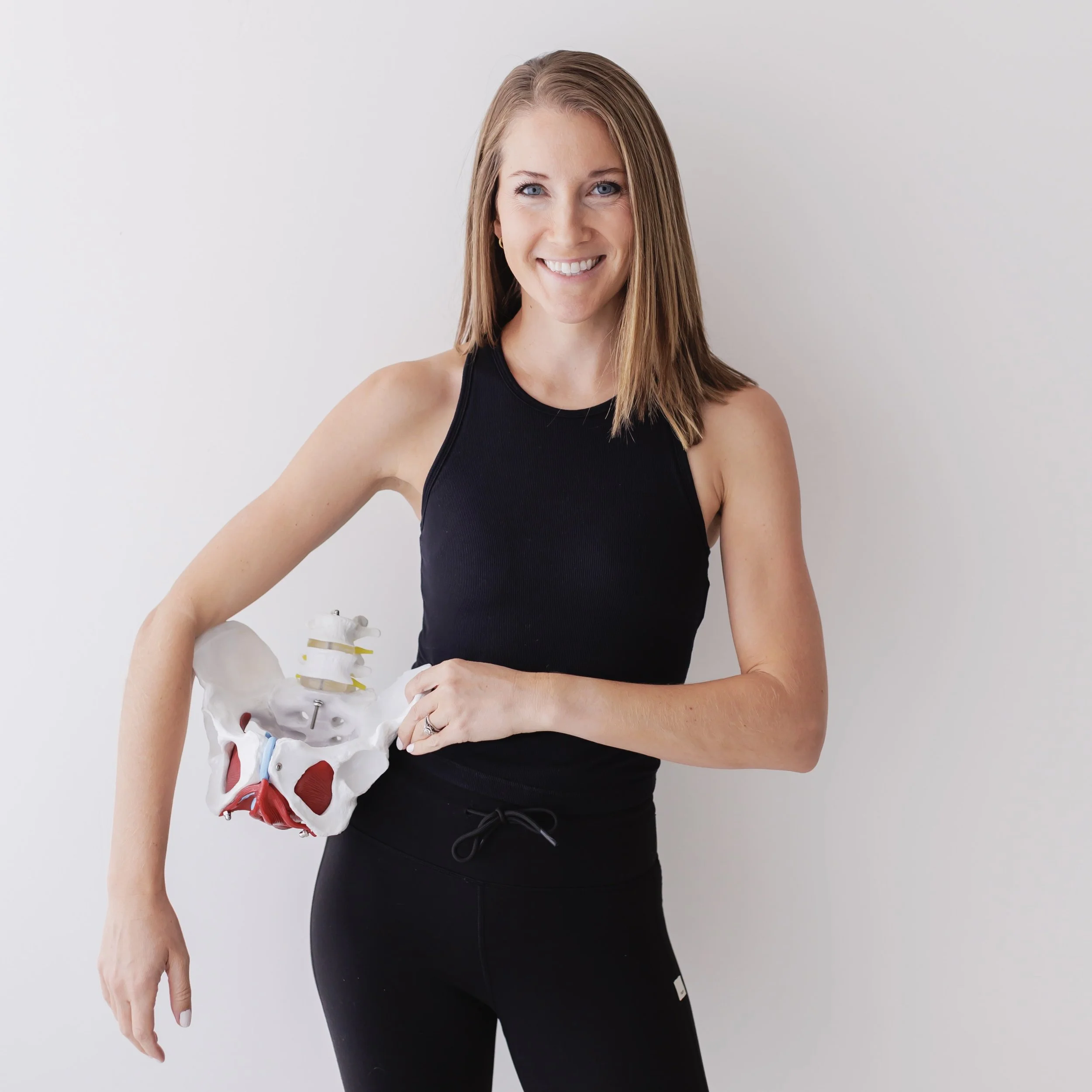Your Guide to Diastasis Recti Recovery
By: Dr. Kaitlyn Kakar, PT, DPT, PCES - Pelvic Health Specialist
Nearly every pregnant mom experiences Diastasis Recti (DR) by the end of pregnancy. Let’s look at what we can do to heal DR postpartum.
What is it?
Diastasis Recti (DR) is the separation of the Rectus Abdominis (6 pack muscle). As your baby grows, your abdomen must expand causing stretching of the skin, muscles, and connective tissue including the linea alba, which is the tissue between the 2 sides of the Rectus Abdominis. Keep in mind that a separation does NOT mean tearing or splitting, but a thinning & stretching of the tissue.
DR is usually painless, but can cause other issues. Because of the separation of the 2 sides of the muscle, it isn’t able to produce the same force and stability as it would otherwise produce. This can create issues for areas such as the low back, hips, and/or pelvis just to name a few.
How to Check for it
Stack your fingers together & place them perpendicular to your belly
Start 1 inch above the belly button, press into your abdomen as you gently lift your head
You will feel both sides of the muscle on either side of your fingers, note
how many fingers you can fit between this space
Repeat this same process at your belly button, then again 1 inch below your belly button
This measurement tells you the width
Next, take note of the depth.
You can measure this using the crease of your knuckles - the first crease, second crease, etc as your fingers sink down into the tissue
You might feel a firm sensation like a trampoline or a more squishy feeling like your fingers are really sinking in.
A true DR is a measurement of greater than 2 finger widths. It’s important to note the depth as well, whether those tissues feel more taut or squishy, because this will indicate the amount of healing that needs to occur. Besides the 2 sides coming closer together, the tissue needs to become taut & strong underneath as well to be able to transfer force effectively.
Healing Diastasis Recti
In order to fully heal DR, you want to take a whole body approach. It’s more than just doing abdominal exercises.
Start with the breath & managing Intra-Abdominal Pressure. If we think of our core like a water balloon, we want the right amount of water or “pressure” in that balloon. If there is too much water or pressure, the balloon will pop - something has to give. Similarly, excess pressure in the abdomen has to go somewhere, generally the path of least resistance. This is the linea alba with DR. Keep in mind that excess pressure COULD also go downward towards the pelvic floor causing other issues like incontinence (leaking of urine or stool) or pelvic organ prolapse. That’s why managing the pressure in your abdomen is so important.
Diaphragmatic breathing will help regulate the pressure.
Focus on breathing down into your diaphragm near the lowest ribs and feel your ribcage expand 360 degrees on all sides
Daily activities such as getting out of bed, lifting a toddler or car seat, or lifting groceries can increase intra-abdominal pressure
Be mindful of how you do these things & exhaling as you move will help to regulate this pressure. Exhale on the Exertion (remember the “E’s”)
Laughing, coughing, & sneezing also increases intra-abdominal pressure so try to stay upright as you do these things
Posture
Aim to stack your rib cage over your pelvis. This alignment helps the core to work more effectively so the pressure can be managed better
No clenching of the abs or glutes to try to achieve better posture
Reconnect & Restoring Core Strength
Remember your core is more than just your abdominal muscles - it is your diaphragm, pelvic floor, & back muscles as well
First, reconnect to these muscles. This is an important first step of awareness.
Then, you want to progressively load these muscles in the correct positions in order to build strength and restore function, being careful not to overload these muscles too soon or too fast.
This is when seeing a Pelvic Floor Physical Therapist (like myself) to give you an individualized program is helpful
Full Body Strengthening
If there is another part of your body that is lacking strength or flexibility (like your hips), that can also affect your DR.
Key areas to strengthen: pelvic floor, lateral hips, hamstrings, lats, upper back (just to name a few)
The number one goal when healing DR is to restore function - meaning your core regains stability & strength to function efficiently & effectively during everyday life & with exercise. The distance of the gap isn’t always an indication of the healing that is occurring even though aesthetically we’d like that gap to close.
Have more questions about DR? Want to know where to start healing yours? Reach out if you would like to schedule an initial evaluation to get started! Free discovery calls are also available. Let’s get you thriving!
ABOUT THE AUTHOR: Kaitlyn Kakar
Dr. Kaitlyn is a Pelvic Health Specialist with a passion for treating pregnant & postpartum moms. As a mom herself, she understands the balance of trying to heal your body while also taking care of littles. Whether you are looking for an enjoyable pregnancy, empowered birth, or fully recovering postpartum, she can’t wait to see you at her office in the Heybrook.
www.thrivingmommas.com | hello@thrivingmommas.com | IG: @thriving.mommas
Located: inside the Heybrook




